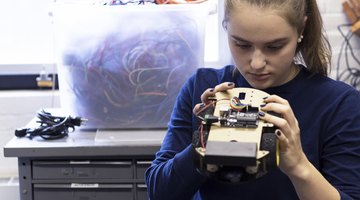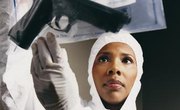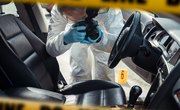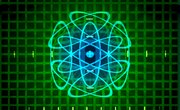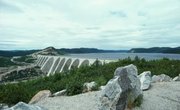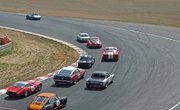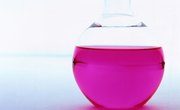As a subject area, physics is rife with fascinating ideas and principles that offer interesting topics for research projects. Physics offers many opportunities for experimental design and visual representations, along with more traditional products to share what you've learned.
Projectile Motion Projects
Projectile motion is an interesting research topic because objects being thrust through space appear to have some sort of force acting upon them. However, whether an object is dropped, thrown or shot, a projectile is moving through space under the force of gravity. Forensic science uses Newton’s laws of motion to investigate crime scenes for bullet trajectory paths to determine angles from which firearms were discharged. Researching projectile motion as it relates to crime scene investigation offers many fascinating and options for creative high school projects with real-world applications.
Feeling Friction's Effects
Whether a famous actor slides across the floor wearing socks, an oversized button-down and a pair of briefs while lip-synching a rock 'n' roll song, or a twentysomething superstar races a hot rod down a dry, concrete riverbed under a bridge, friction is at play. The force that resists the motion is known as friction. Studying friction and its effects on everyday motion or famous scenes in movies can bring a research project to life. Determining the cause and effects of friction can result in a stimulating physics presentation.
Electronic Circuit Theory
Society as a whole relies on electricity in all its wonder. Learning the how and why of it all is a riveting research topic for high school students. Whether illustrating Ohm’s law and determining how to calculate an electric charge or determining which circuit conducts electricity using the superposition method, electronic circuit theory sparks an interest in the physics-minded student. Fantastic visual and auditory projects can be created using the principles of electronic circuit theory and this can create a fascinating presentation.
Optics and Reflection
Experimenting with the way rays of light are reflected in mirrors, glass or pools of water present interesting fodder for a high school research project. Laser beams, flashlights and sunshine can all be shined upon mirrored surfaces to determine the course of beams of light. The physics behind the motion of the beam and the way the human eye processes an image and a reflected image offer the opportunity for students to create a wide variety of experiments and diagrams to illustrate the theories about light and its properties.
Related Articles
References
Resources
Writer Bio
Christy Maxwell began writing professionally in 2009. She contributes to faith-based publications and writes content for several web-based companies. A National Board Certified special education teacher, Christy is considered an expert in education, writing everything from curriculum to short stories. She holds a Bachelor of Science in counseling from Old Dominion University and a Master of Science in education from William Carey College.

